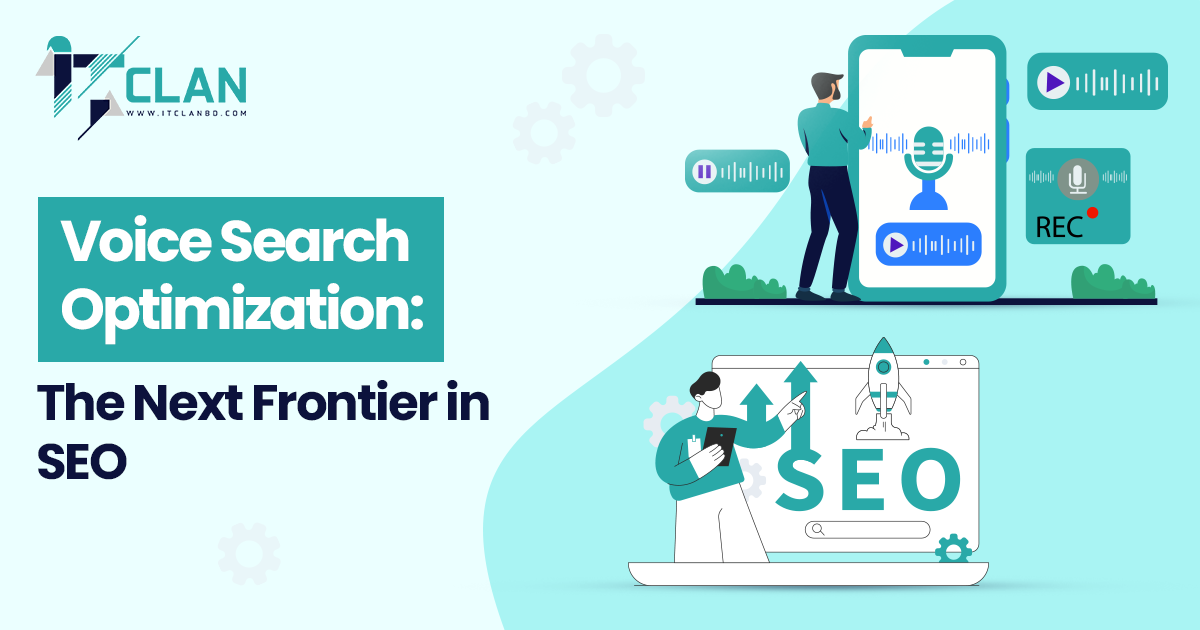
Our Blog Details
Home / Our Blog DetailsHave you ever landed on a website that just felt right? It loaded fast, looked beautiful, guided you smoothly, and before you knew it, you’d already clicked “Buy Now,” signed up for the newsletter, or filled out a contact form.
That’s the power of good UI/UX design.
Whether you’re running an e-commerce store, a SaaS platform, or a service-based business, your website’s design can either boost or break your conversion rate. In today’s online world, attention spans are short. If your site isn’t easy to use and pleasant to interact with, visitors leave—and they probably won’t come back.
In this blog, we’ll break down what UI/UX really means, how it impacts your conversion rates, and what you can do to improve your site and get more users to take action.
What is UI/UX Design?
First things first: UI and UX get tossed around a lot, but let’s keep it simple:
- UI (User Interface): This is the look of your site including colors, buttons, images, layouts, and fonts. It’s what people see and click on.
- UX (User Experience): This is the feel of the site that how easy it is to finagle your way from the homepage to checkout. It includes how easy, smooth, and even enjoyable it is to interact with everything on your site.
Think of UI as the skin and clothes, and UX as the whole experience of walking through your digital store or office. You need both working together to wow your visitors.
Want to understand how frameworks like Bootstrap play a role in responsive design? Check out how Bootstrap handles responsive web design for a deeper dive.
Let’s See a Table of Differences Between UX & UI to Clear Things Up
So… What’s a Conversion Rate?
A conversion is when a visitor completes a desired action on your website like buying a product, signing up for a newsletter, or requesting a quote. Your conversion rate is the percentage of visitors who take that action.
Let’s say you have 1,000 visitors and 50 of them sign up for your service. That’s a 5% conversion rate.
And here’s the magic: even small improvements in conversion rate can lead to big boosts in revenue. Going from 3% to 5% might not sound huge, but if you’re getting thousands of visitors, the impact is massive.
Why UI/UX Design Matters for User Engagement & Conversion Rate
You make good design, then you can get good conversion rate. Let’s find out why:
- First Impressions Count: Users judge your site in just 0.05 seconds. A clean, attractive design keeps them around longer.
- Easy Navigation Wins: If users can find things quickly, they’ll stay longer and explore more. Simple navigation = happy visitors.
- Mobile-Friendly is a Must: Most users are on phones. A responsive design keeps your site smooth and user-friendly on any device.
- Consistent Branding Builds Trust: Matching colors, fonts, and style across pages creates a strong, trustworthy brand people remember. And trust isn’t just visual — accessibility builds trust too. Screen reader users and low-vision visitors need to know your site works for them. See how: UI/UX accessibility for conversions.
Good UI/UX doesn’t just look nice—it keeps users engaged and coming back. To stay ahead of design trends, explore our blog on responsive web design trends to future-proof your site.
How UI Design Drives Conversion Rate
When someone lands on your website, it takes just 0.05 seconds for them to form an opinion. That’s right—first impressions are everything. Here’s how good UI helps:
- Visual Appeal
Clean, modern design builds trust. If your site looks outdated, users might assume your business is too.
- Clear CTAs (Call-to-Actions)
Buttons like “Buy Now,” “Get Started,” or “Book a Free Call” should stand out and be easy to find.
- Mobile Responsiveness
Over 60% of web traffic is mobile. If your site isn’t mobile-friendly, you’re losing potential customers.
- Consistency
Consistent fonts, colors, and layout make your site easier to navigate and more professional.
A visually appealing site builds credibility and encourages users to stay longer, which increases the chance of a conversion.
How UX Design Drives Conversion Rate
UI gets users interested—UX gets them to act. If your website is hard to navigate, slow, or confusing, users will get frustrated and leave. UX design focuses on creating smooth, logical paths for users to follow. Great UX design includes:
- Fast Load Times
Speed matters. A delay of even one second can reduce conversions by 7%.
- Easy Navigation
Users should find what they’re looking for in just a few clicks.
- Simplified Forms
Too many fields = drop-off. Keep forms short and easy to fill out.
- Guided User Journeys
Help users move from interest to action — like from homepage → product page → checkout.
- Personalization
Smart UX anticipates what users need and offers personalized content or product suggestions.
When your site feels effortless to use, visitors are more likely to trust you and complete the action you want them to take.
Real-World Examples and Stats
It would be better if we could see some real stats and examples:
- Stat: A 2020 Google study found that as page load time increases from 1 to 3 seconds, the probability of a bounce increases by 32%.
- Stat: A well-designed user interface could boost conversion rates by up to 200%, while better UX design could yield conversion rates up to 400% higher.
Mini Case Study: Imagine an online shoe store with a cluttered homepage and a confusing menu. After redesigning to a clean, simple layout with obvious product categories and a fast, distraction-free checkout, the store saw its conversion rate jump from 2% to over 4%—doubling sales without a single extra ad!
Common UI/UX Mistakes That Kill Conversions
Now, let’s flip the coin. Are you unknowingly driving people away? These mistakes could be costing you sales:
- Cluttered Layouts — Too much text, too many colors, or a chaotic design overwhelms users.
- Weak CTAs — If your buttons are hard to find or poorly worded, users won’t click.
- Non-Responsive Design — A desktop-only website alienates mobile users.
- Overloaded Pages — Too many ads, pop-ups, or banners are overwhelming.
- Slow Load Times — People won’t wait around. They’ll bounce to your competitor.
- Too Many Steps — Complicated checkouts or long forms are conversion killers.
To over come this, you should always check your site, update it and take feedback from the users. Moreover, a simple audit of your current site can reveal where improvements are needed. So, now, let’s elaborate the do’s to avoid these mistakes.
How to Get UI/UX Right
You don’t need a PhD in design to make your site better. Here’s some simple steps to start:
1. Do a Website Audit
Look at your site with fresh eyes—or ask a friend to test it and talk you through our experience. Where do they get stuck? What’s confusing or annoying?
2. Get User Feedback
Ask actual users what they think! Use surveys, polls, or feedback pop-ups. Even two or three real opinions can reveal blind spots.
3. Run A/B Tests
Change one thing at a time—maybe a headline, button color, or image—and see what leads to more conversions. Use A/B testing tools for easy tracking.
4. Invest in Professional Help
Sometimes, a seasoned designer or UX specialist can find quick wins you might miss. Think of it as hiring an expert mechanic for your digital car.
5. Commit to Ongoing Improvement
UI/UX isn’t “set it and forget it.” Tastes and tech change. Keep testing, tweaking, and asking for feedback regularly.
Curious about budgeting for your next project? Learn more about the cost to build a website in our detailed breakdown.
Tools/Resources to Improve Your UI/UX Design
You don’t need to be a designer or developer to start optimizing your site. Here are some tools to help:
- Google Optimize / VWO – Run A/B tests and see which layout performs better.
- Hotjar / Crazy Egg – Track heatmaps and user sessions to find drop-off points.
- UserTesting / Maze – Get real people to test your site and give feedback.
- PageSpeed Insights – Find out why your site is slow and how to fix it.
- Google Analytics – See where visitors drop off or succeed in converting.
- WebAIM and Lighthouse (by Google) – Run fast accessibility and performance tests.
Keep learning! There are tons of free design resources and courses exist online for everything from UX basics to advanced UI techniques.
Let’s Wrap It Up
So, we learn that our website is more than a digital business card, it’s a conversion machine. But only if it’s designed the right way. UI catches the eye. UX seals the deal. Together, they’re the key to turning visitors into leads, and leads into customers. If you want professional help to improve your website UI/UX or build your website from the scratch, try ITclan BD.
At ITclan BD, you can have your desired UI/UX design that not only looks great but drives real results. Our team understands the science of user behavior and combines it with clean, modern design to build websites that convert.
Ready to increase your conversions with smart design? Try ITclan BD’s web design service.
Frequently Asked Questions
Good UX/UI makes your site easy to use, visually appealing, and smooth to navigate, as as result it leads users to take action faster, which boosts conversions.
UX/UI design improves site speed, mobile responsiveness, and user engagement—factors that search engines love. A well-designed site keeps visitors longer, lowers bounce rates, and boosts your SEO rankings.
If you’re seeing high bounce rates, low conversions, or user complaints, it’s time to review your design. A quick audit can reveal problem areas.
Ideally, you should review your site every 12–18 months, or whenever your branding, goals, or user behavior changes.
Focus on clean UI, clear CTAs, fast loading speed, mobile optimization, and a smooth checkout process. Test regularly, use strong visuals, and simplify the user journey to guide visitors toward taking action.
Recent Blog Post
Quality Is Our Strength

Voice Search Optimization: The Next Frontier in SEO...
Have you ever asked Google Assistant to “find the best restaurant near me”? Or did you tell Siri to “play relaxing music”?If yes, then you’ve already used voice search, which is o...

How Cloud-Based DevOps Solutions Are Transforming IT Operati...
The technology is upgrading fast, as well as, businesses can’t afford to wait weeks or months for software updates. Customers expect smooth experiences, fast features, and quick fixes whe...

The Benefits of Continuous Integration and Continuous Deploy...
Right now, software development is no longer about releasing updates once in a blue moon. Users expect frequent updates, faster features, and bug-free experiences. This is where Continuous ...

